09 Oct The Mughal Emperors Love for Beautiful Flowers and Floral Designs

Bābur supervising the laying out of his Charbagh The Garden of Fidelity. Opaque watercolor and gold on paper
India – ca.1590
Artists: Bishndas and Nanha From the V&A
Mughal Floral Designs – South Asian art has always been full of floral images, but this reached its zenith in the Mughal empire. During the 330 years that the dynasty ruled, most magnificent art, architecture, and craft that the world has seen were produced, and much imagery used was from flora, particularly in the reigns of Jahāngīr and Shah Jahan. However, Bābur, Humayun, and Akbar are all recorded as profoundly interested in gardens and flowers. One of Babur’s first actions in India was to make a garden, the Charbagh.
The popularity of floral motifs in Mughal art was because traditionally, living creatures and humans were not supposed to be depicted in Islamic art. Therefore, the plant kingdom provided subjects that were non-controversial and capable of stylization.

Mughal Emperors love for Flowers.
Persian and Central Asian styles had deeply influenced earlier Mughal art, but this changed to a more realistic and colorful style under Jahāngīr, who had a deep interest in flora and fauna, fuelled by his trip to Kashmir in 1620. During his reign, travelers from Europe brought art as gifts, which profoundly influenced his atelier. Studies of flowers became more naturalistic, and new traditions grew from the fusion of disparate cultures.
READ THE STORY OF KASHMIR SHAWLS
Jahangir was fortunate to have the court painter Mansūr, who made wonderfully accurate botanical studies, sadly few survive. He painted an album of Kashmir’s spring flowers in 1621, the loss of which is tragic.
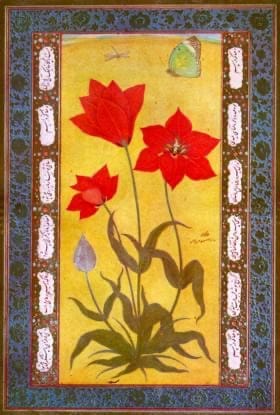
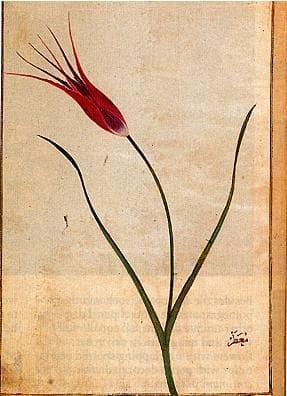
Shah Jahan continued the frequent use of floral imagery, particularly in the Taj Mahal’s marble inlay. One of the primary sources of Mughal floral imagery is the album assembled by Dara Shikoh, his son, which carries paintings by the artist Muhammad Khan, many with a European influence.


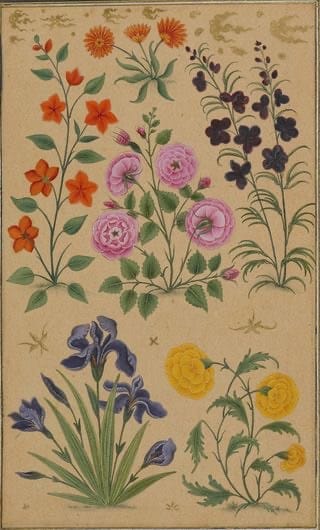
Under Aurangzeb, political instability began affecting floral imagery as his ateliers disintegrated, and artists decamped to Kangra and Rajasthan. But the impact of floral imagery remained in Indian art and craft long after the Mughal empire’s demise, right up to the present time.
Flowers from the reigns of Jahāngīr and Shah Jahan appear as botanical studies, in miniatures depicting gardens, in calligraphy, and as Pietra dura and murals. They are found, too, in embroidery and prints on textiles, jewelry, and crystal cups. Knowledge of flowers was considered necessary to be regarded as a sophisticated gentleman, as per the Mirzanama, a 17th-century treatise, which states that a Mirza must-have flower gardens in his house.
Learn more HERE on this topic from Nicolas Roth, a PhD in South Asian Studies and a Visual Resources Librarian for Islamic Art and Architecture at the Harvard Fine Arts Library.
Another great article on this topic HERE

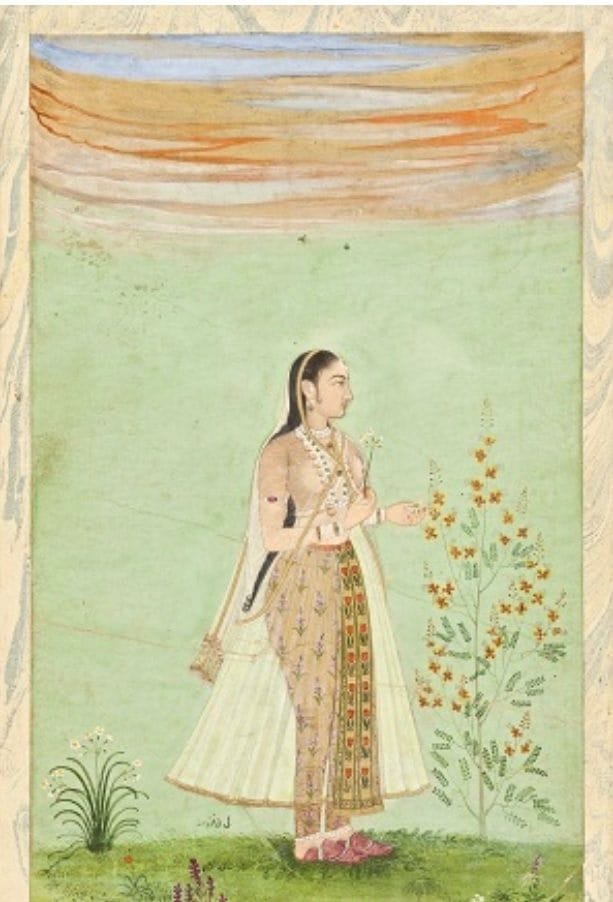
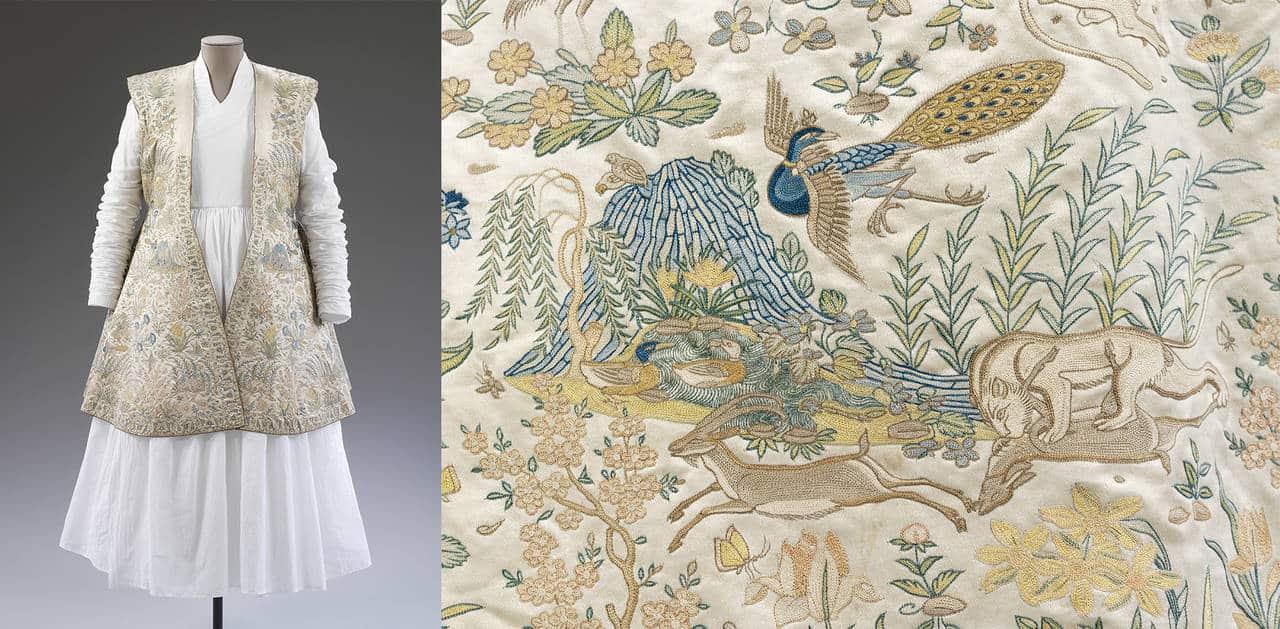

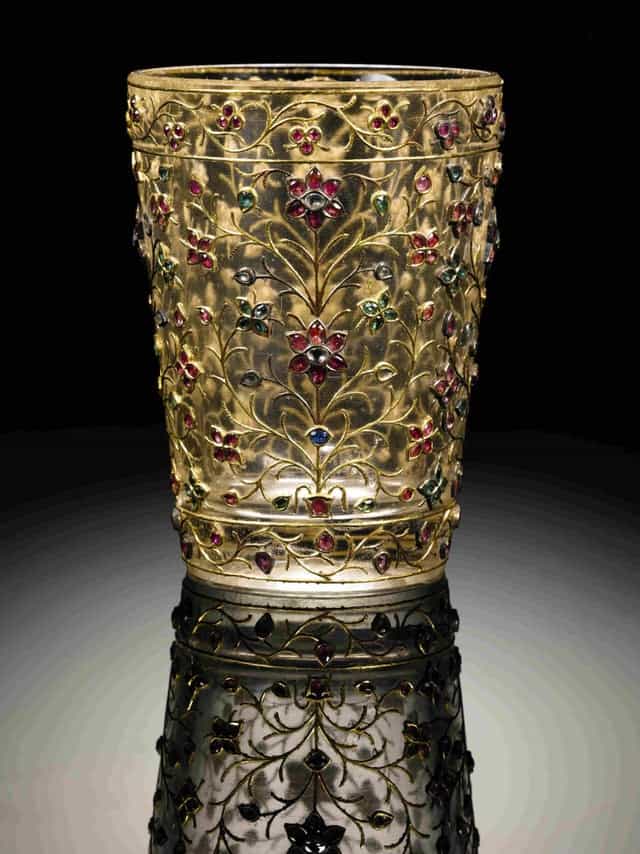
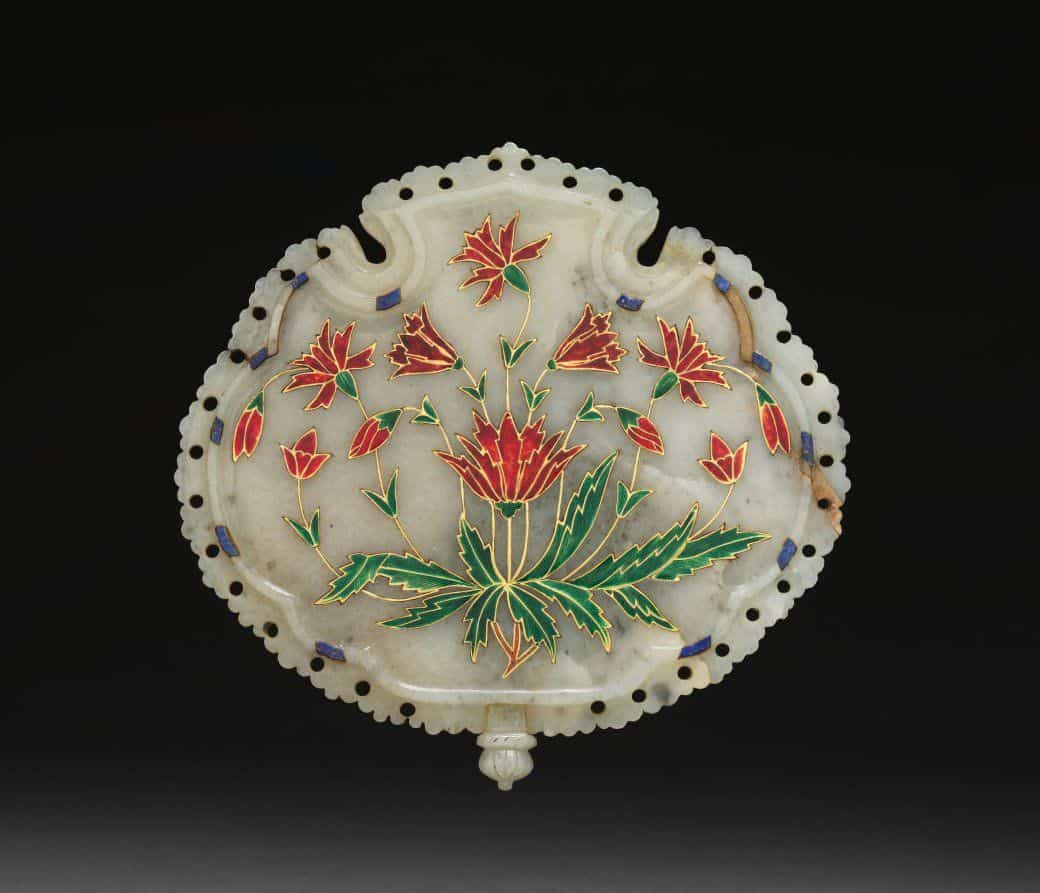
While many flower motifs in Mughal art were purely imaginary and, in many cases, derived from European prints, some flowers were favorites and botanically accurate too. Of these prominently are the poppy, marigold, and narcissus, though the larkspur, crocus, iris, and saffron frequently appear as well.
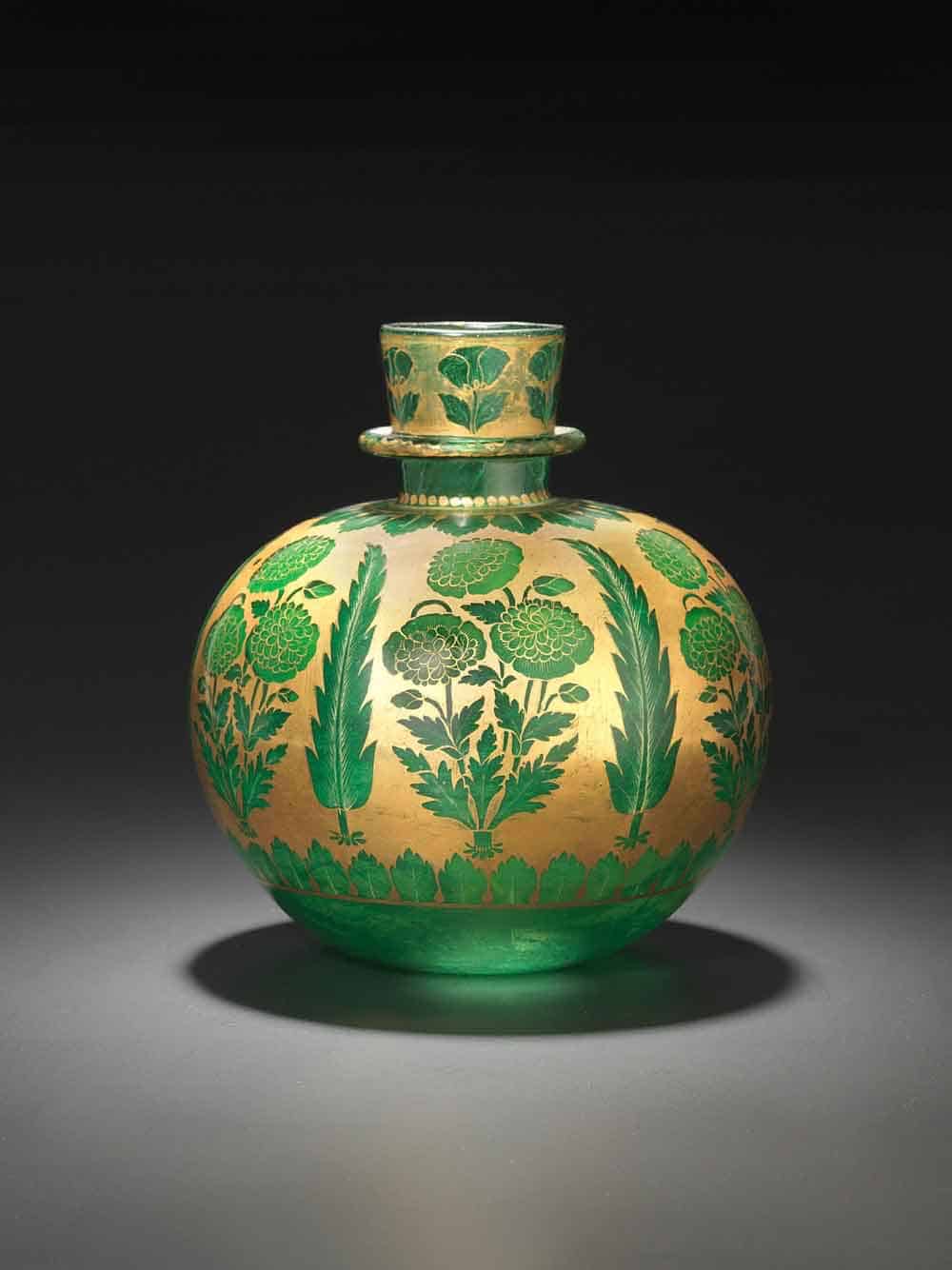
Poppy in Mughal Floral Designs
The opium poppy, though a native of temperate Asia, is the most common in Mughal decorative arts. On a sinister note, many Mughal rulers, and particularly Jehangir, used opium regularly. Therefore the poppy appears regularly on water pipes. The poppy appears on Kashmir shawls, on carpets, embroidered and block printed on apparel, and of course, famously on the walls of the Taj Mahal and Itimad ud Daulah. It appears too on tents as kannats or panels, especially crucial to the Mughals because of their itinerant lifestyle, where tents served as traveling palaces.
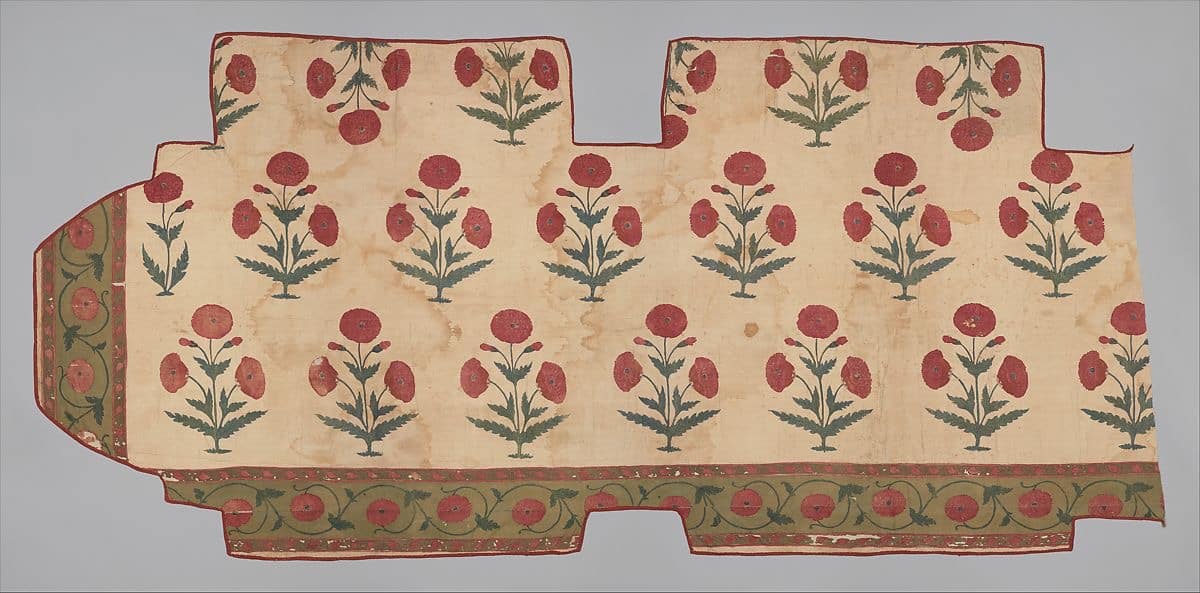
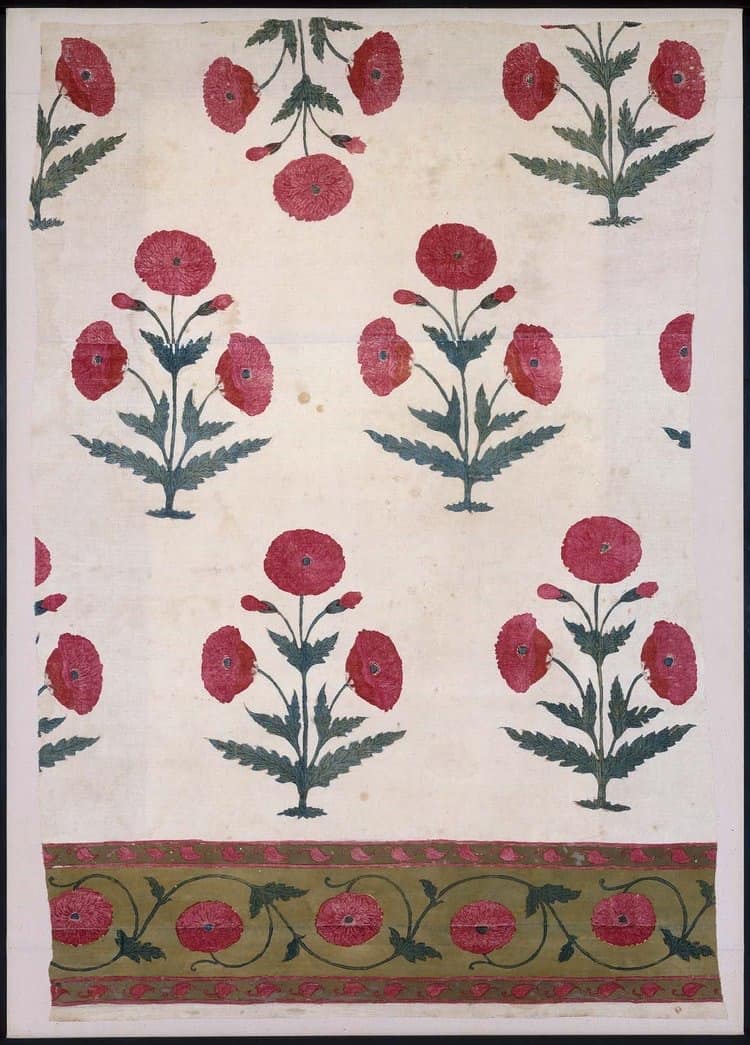
Interestingly, the poppy, forgotten for eons, was revived by the French designer Brigitte Singh, who lives and works in Jaipur, from material she discovered in her father-in-law’s library. Oscar de la Renta adopted the Mughal poppy as a leitmotif in their SS 19 collection.
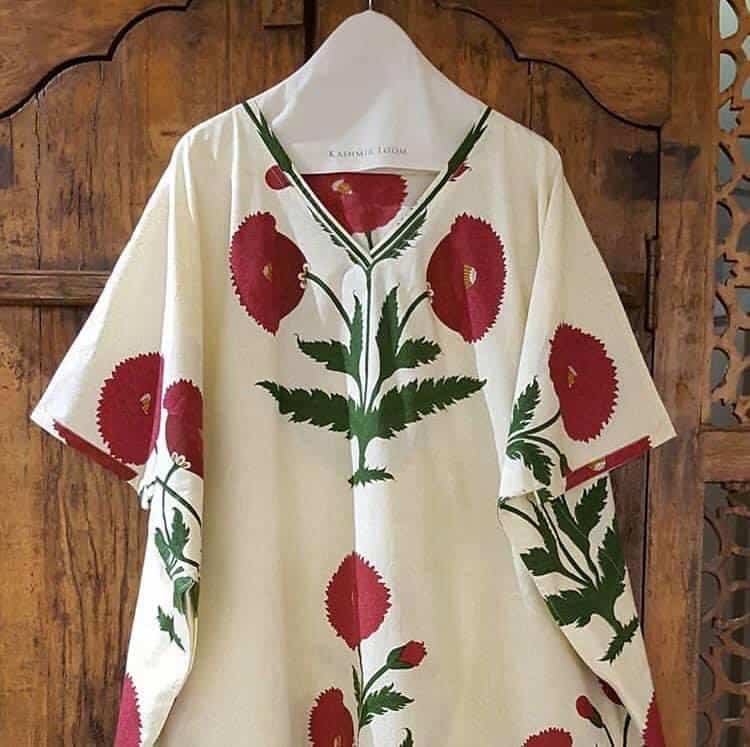

Marigold in Mughal Floral Designs
The marigold or genda has always been a part of Indian floral iconography, particularly in marriages and religious contexts, though it was initially not of Indian origin. This flower often appears in the brocades of the Mughal era, as well in miniatures.
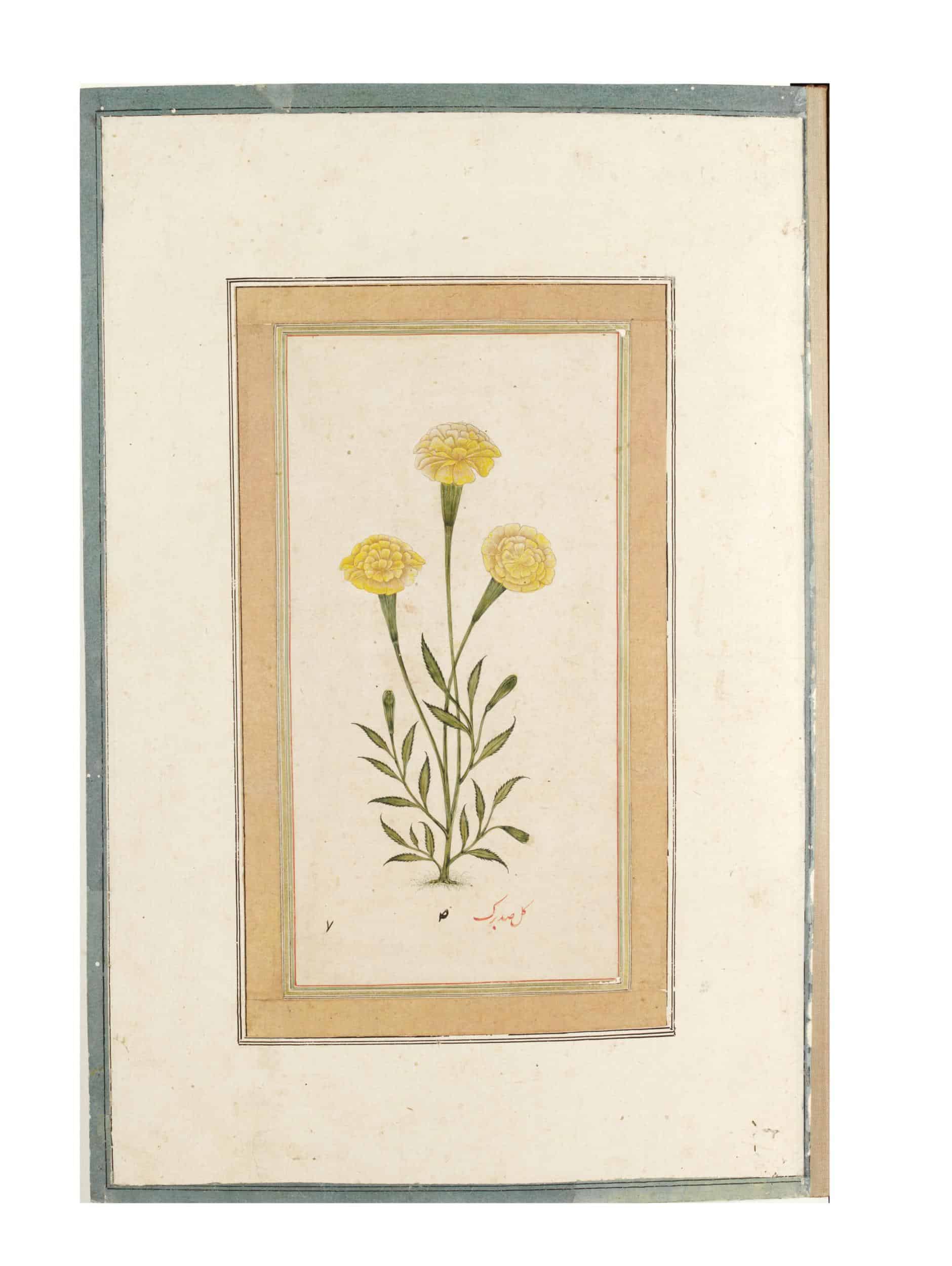
Like the poppy, the marigold continues as a common motif in Indian design, appearing as embroideries, as a block print, and in brocades. It is even the subject of a popular song, called Genda Phool.
Narcissus in Mughal Floral Designs
The narcissus or Nargis, with its trumpet and perianth, frequently appears in Mughal floral arts, particularly as a buteh in Kashmir shawls, in miniatures the walls of the Taj Mahal.
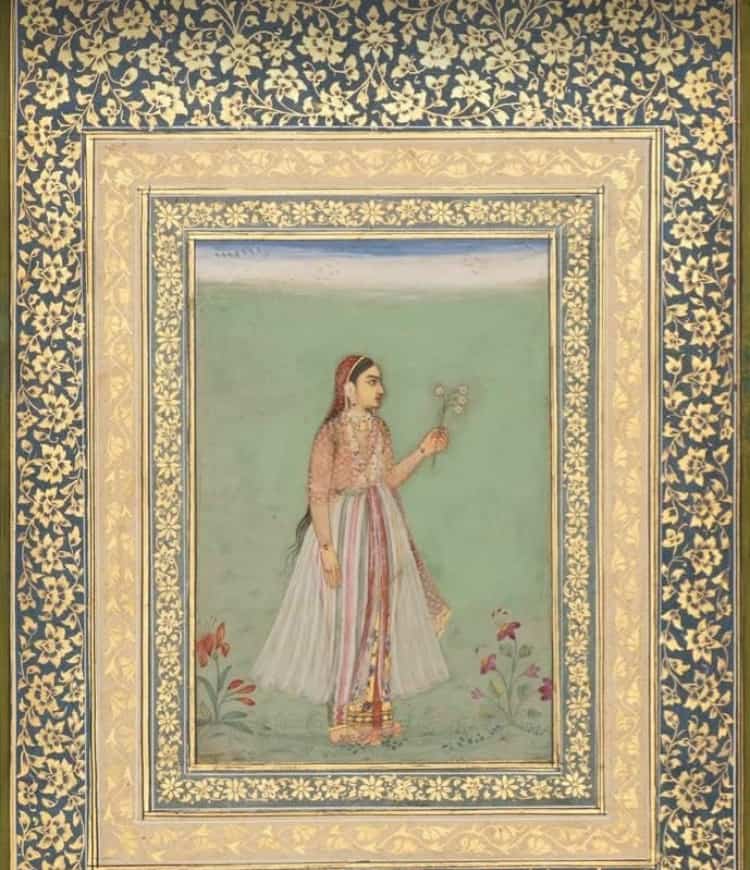
The Mughal legacy of floral motifs continues as a strong force in Indian design and popular culture until today, frequently appearing in apparel, art, and home, particularly in the craft space.



No Comments